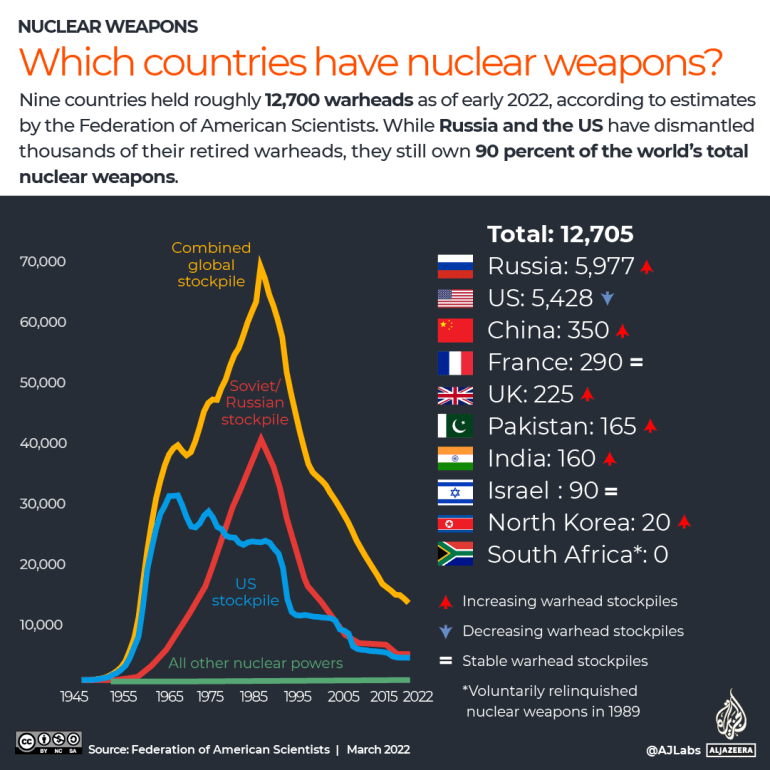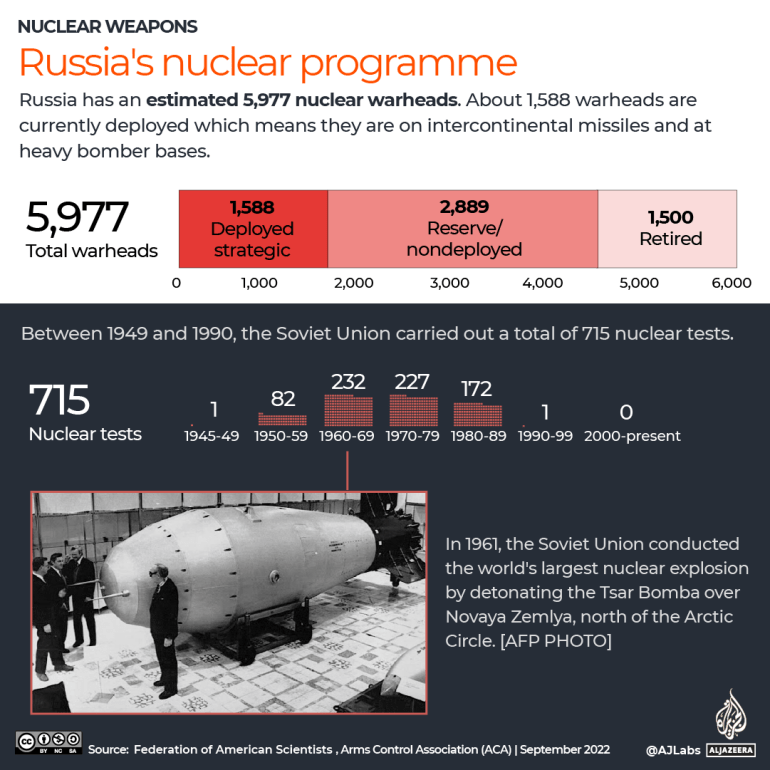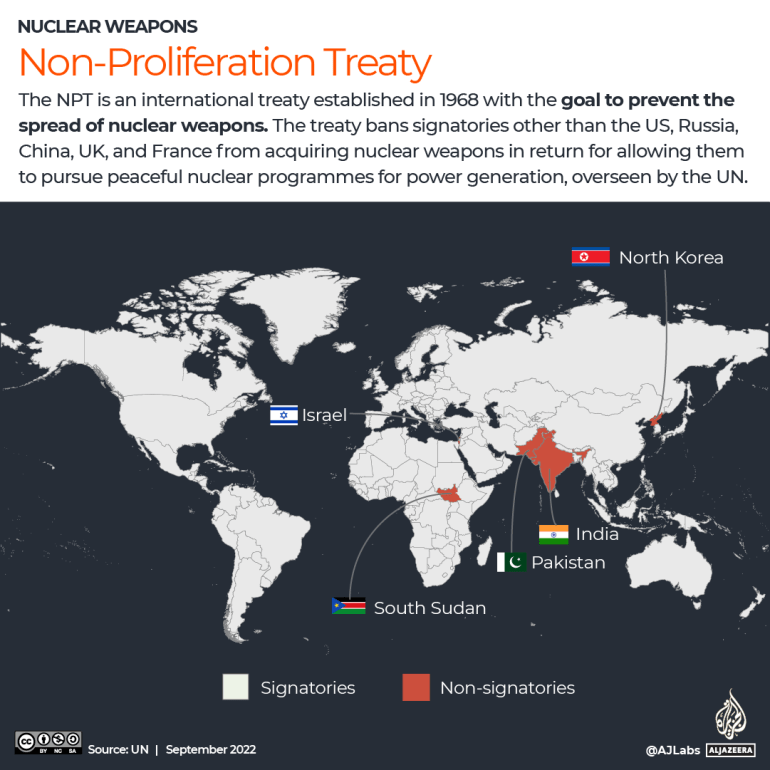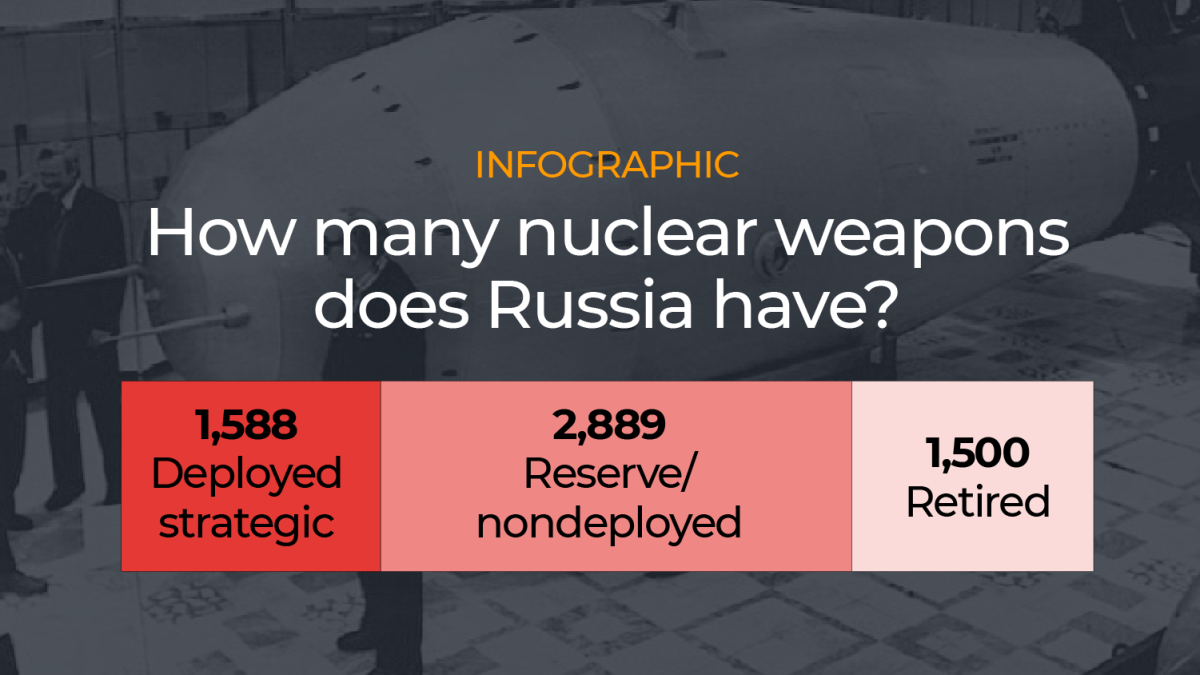As tensions continue to rise and the rhetoric heats up, we take a look at Russia’s nuclear capabilities.
On Wednesday morning, Russian President Vladimir Putin ordered a partial mobilisation while threatening to use “all weapons available” in case of attack.
In a pre-recorded speech, Putin accused Western countries of arming Ukraine’s military and encouraging Kyiv to attack Russia.
“In the event of a threat to the territorial integrity of our country and to defend Russia and our people, we will certainly make use of all weapon systems available to us,” he said. “This is not a bluff. And those who try to blackmail us with nuclear weapons should know that the weathervane can turn and point towards them.”
The United States and Kyiv’s Western allies have said Moscow’s latest moves – including planned annexation referendums in occupied Ukrainian areas – showed Russia’s campaign was failing.
As tensions grow and the rhetoric heats up, we take a look at Russia’s nuclear capabilities.
Which countries have nuclear weapons?
Nine countries held roughly 12,700 warheads as of early 2022, according to estimates by the Federation of American Scientists.
While Russia and the US have dismantled thousands of their retired warheads, they still own 90 percent of the world’s total nuclear weapons.
At the peak in 1986, the two rivals had nearly 65,000 nuclear warheads between them, making the nuclear arms race one of the most threatening events of the Cold War.
South Africa is the only country to voluntarily relinquish nuclear weapons. In 1989, the then-government halted its nuclear weapons programme and in 1990 began dismantling its six nuclear weapons.
Two years later, South Africa joined the Treaty on the Non-Proliferation of Nuclear Weapons (NPT) as a non-nuclear country.

Russia’s nuclear programme
Russia has an estimated 5,977 nuclear warheads. About 1,588 warheads are currently deployed which means they are on intercontinental missiles and at heavy bomber bases. About half (2,889) of Moscow’s warheads are not deployed on launchers but in storage.
The remaining 1,500 warheads are retired and set to be dismantled.
The USSR conducted its first nuclear test on August 29, 1949. Codenamed RDS-1, the test was conducted at the Semipalatinsk test site in Kazakhstan. Between 1949 and 1990, the Soviet Union carried out a total of 715 nuclear tests.
In 1961, the Soviet Union conducted the world’s largest nuclear explosion by detonating the Tsar Bomba over the Novaya Zemlya, north of the Arctic Circle. The explosion’s yield was 50 mega-tonnes, 3,300 times more powerful than the nuclear bomb dropped on Hiroshima.

Treaty on the Non-Proliferation of Nuclear Weapons
Established in 1968, the NPT aims to prevent the spread of nuclear weapons and promote the peaceful use of nuclear energy.
The treaty bans signatories other than the US, Russia, China, United Kingdom, and France from acquiring nuclear weapons in return for allowing them to pursue peaceful nuclear programmes for power generation, overseen by the UN.
As many as 190 nations are currently signed up for the treaty, with only India, Israel, Pakistan and South Sudan never being a party to it. North Korea signed the treaty in 1985 but withdrew from it in 2003. Three years later, under the leadership of Kim Jong Il, the country detonated its first nuclear weapon.

